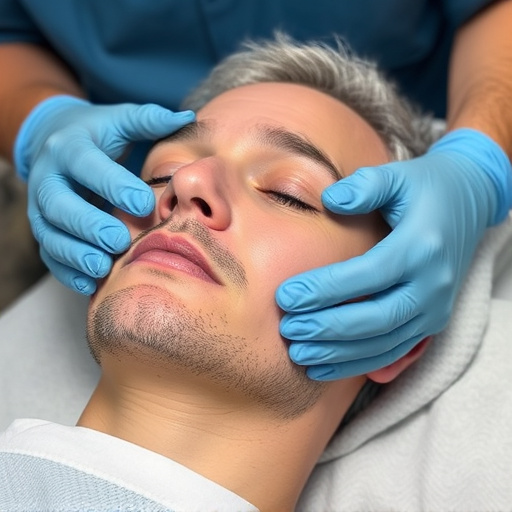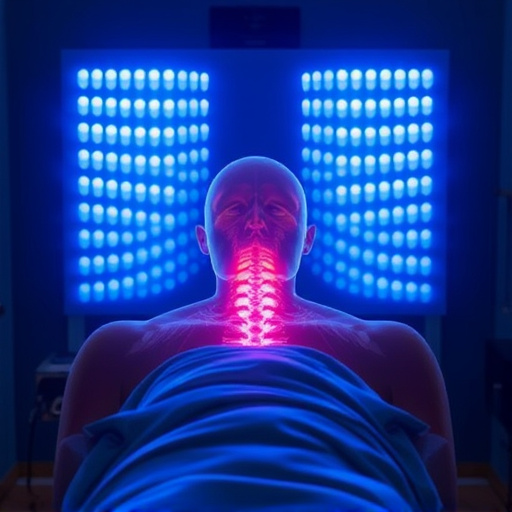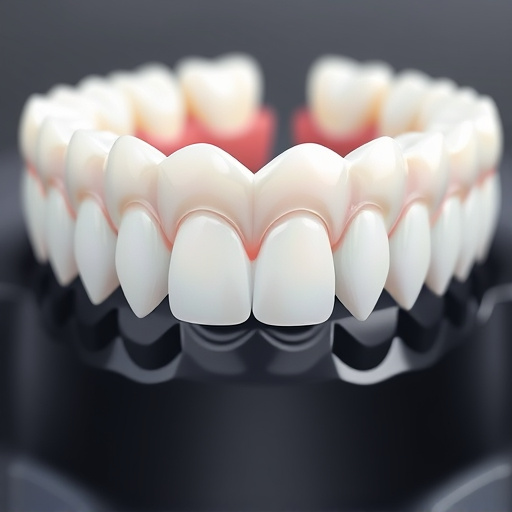Dermatitis, characterized by skin redness, itching, and inflammation, has both acute and chronic forms triggered by environmental factors, allergies, or an overactive immune system. Types include atopic dermatitis (eczema), contact dermatitis, and seborrheic dermatitis. Treatment focuses on understanding causes; symptoms range from dry, itchy skin to rashes, blisters, and scarring. Non-invasive procedures like hydrating facials and microneedling, along with traditional treatments like topical corticosteroids and antihistamines, offer relief. Achieving comfort through lifestyle changes, self-care techniques, and medical treatments is key to effective dermatitis management.
Dermatitis, a condition characterized by itchy, inflamed skin, can significantly impact daily life. This article aims to demystify dermatitis treatment, focusing on comprehensive strategies to eliminate symptoms and restore comfort. We’ll explore understanding dermatitis, from its causes and common symptoms to various treatment options, including topical medications, oral therapies, and effective lifestyle changes. By the end, you’ll be equipped with valuable insights for managing dermatitis effectively.
- Understanding Dermatitis: Causes and Common Symptoms
- Exploring Treatment Options: Topical to Oral Medications
- Restoring Comfort: Lifestyle Changes and Self-Care Techniques
Understanding Dermatitis: Causes and Common Symptoms

Dermatitis is a general term for a range of skin conditions characterized by redness, itching, and inflammation. It can be acute or chronic and is often triggered by environmental factors, allergies, or an overactive immune system. The most common types include atopic dermatitis (eczema), contact dermatitis, and seborrheic dermatitis.
Understanding the causes is key to effective dermatitis treatment. For instance, contact with irritants or allergens can lead to contact dermatitis, while dry skin and genetic predisposition often contribute to atopic dermatitis. Symptoms vary but typically include dry, itchy skin, rashes, blisters, scaling, and cracking. In some cases, it may cause skin tightening and even permanent scarring if left untreated. Hydrating facials and microneedling therapy are emerging as beneficial non-invasive procedures alongside traditional treatments like topical corticosteroids and antihistamines to manage symptoms and restore comfort for those affected by dermatitis.
Exploring Treatment Options: Topical to Oral Medications

When exploring dermatitis treatment options, individuals often start with topical medications. These include creams, ointments, and lotions that can provide immediate relief from itching, redness, and inflammation. Key active ingredients like corticosteroids, antihistamines, and calcineurin inhibitors are commonly found in these topicals, working to suppress the skin’s immune response and reduce symptoms.
Beyond topical treatments, oral medications offer another layer of dermatitis treatment options. Antibiotics, for instance, may be prescribed to combat bacterial infections that can exacerbate skin conditions. In more severe cases, oral corticosteroids or immunosuppressant drugs might be recommended to significantly suppress the immune system’s overactive response. Additionally, recent advancements in dermatology have introduced novel treatments such as hydrating facials and targeted body contouring techniques, contributing to overall skin health and restoration of comfort for those suffering from dermatitis.
Restoring Comfort: Lifestyle Changes and Self-Care Techniques

When managing dermatitis, restoring comfort becomes a key focus alongside eliminating symptoms. Beyond medical treatments like topical creams and prescription medications, lifestyle changes and self-care techniques play a significant role in achieving relief and enhancing overall well-being. Simple adjustments to daily routines can make a world of difference for those dealing with this skin condition.
Incorporating soothing facial treatments or chemical peels at a trusted medical spa service can provide targeted dermatitis treatment while promoting relaxation. Additionally, practicing good skin hygiene, using gentle cleansers, and avoiding irritants are essential self-care practices. Hydrating the skin with rich emollients and wearing protective clothing in dry, harsh environments further supports healing and prevents flare-ups. By combining these approaches, individuals can effectively manage dermatitis symptoms while reclaiming comfort and a sense of normalcy in their daily lives.
Dermatitis treatment aims to alleviate symptoms, restore comfort, and improve quality of life. By understanding the causes and exploring a variety of treatment options, from topical medications to oral therapies, individuals can find effective relief. Additionally, implementing lifestyle changes and self-care techniques plays a crucial role in managing dermatitis, enabling folks to reclaim their comfort and confidence. Remember that, with the right approach, managing dermatitis is achievable, offering a path to a calmer, more comfortable life.














